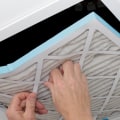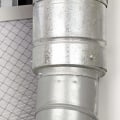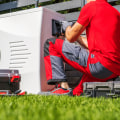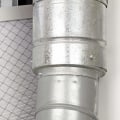In most cases, a Merv 11 air filter is not too tall for residential use. Generally speaking, anything under a Merv 13 air filter should provide very efficient air purification in a house without affecting airflow. The short answer is that it can, but it's not really a problem except in extreme circumstances. Most modern HVAC systems have no problem working with higher Merv filters, so millions of homeowners rely on them. The main risk of high-efficiency air filters comes from the fact that they remain unchanged for long periods of time.
If you're aware of changing your filters regularly, you're unlikely to experience any filter-related issues with your HVAC system. Although the American Society of Heating, Refrigeration and Air Conditioning Engineers (ASHRAE) suggests a MERV 13 rating, it may not be the most efficient option for some residential HVAC systems. In fact, the MERV 11 may even be too restrictive. It is best to adhere to the oven manufacturer's recommendations or consult an HVAC professional to determine exactly which Merv rating is best for your specific system. If your furnace's MERV rating is too high, it can force it to work too hard and leave it vulnerable to damage.
In addition, you may not get the air velocity needed to reach all parts of your house, leaving inconsistencies in temperature. Generally, a filter with a higher MERV rating will reduce airflow. However, there are many other factors at play, such as the size of the filter and the type of fan motor of the HVAC system. It seems that it would be enough to just use the high Merv filter media, blast it with compressed air, and then insert the filter into a pocket of the DIY face mask, between the two layers of fabric. At the heart of an optimally functioning HVAC system is an oven filter with the right MERV rating for you.
Merv ratings range from 1 to 20, with 1 being the lowest filtering capacity and 20 being the highest filtering capacity. They also have an external housing for a MERV 14 filter, I wish I had installed it too. Keep in mind that as the MERV rating increases, the filter becomes more restrictive and more pressure and energy will be needed to push air through it. MERV 8 filters trap dust, lint, debris, pet hair, small insects such as dust mites, particles from sanding or spray paint, and textile fibers from clothing or carpet. Using an oven filter with a higher MERV rating than your use case requires may have adverse effects. Overall, the highest MERV rating that is safe for residential use is MERV 13, although such a high rating is rarely needed in a residential home unless someone has severe dust allergies or asthma and needs an advanced air filter.
MERV 13 are the denser filter types discussed here, so they need to be changed more regularly than types with lower MERV ratings. Also, if I tried this modification of the MERV13 filter myself, I would make many filter discs and change them after each exposure to several people. A MERV rating of 13 to 16 is considered hospital-level air quality, so your home is unlikely to need more than that. When buying oven air filters, don't confuse MERV with other sorting systems that may appear on packaging (especially from large home improvement stores).






